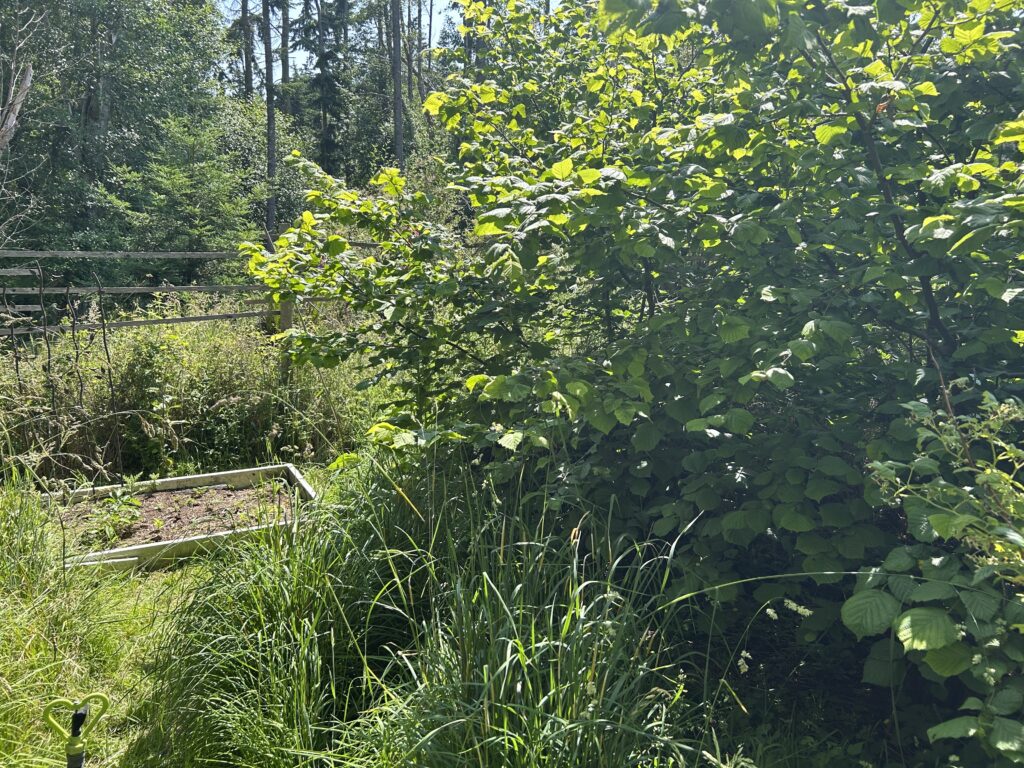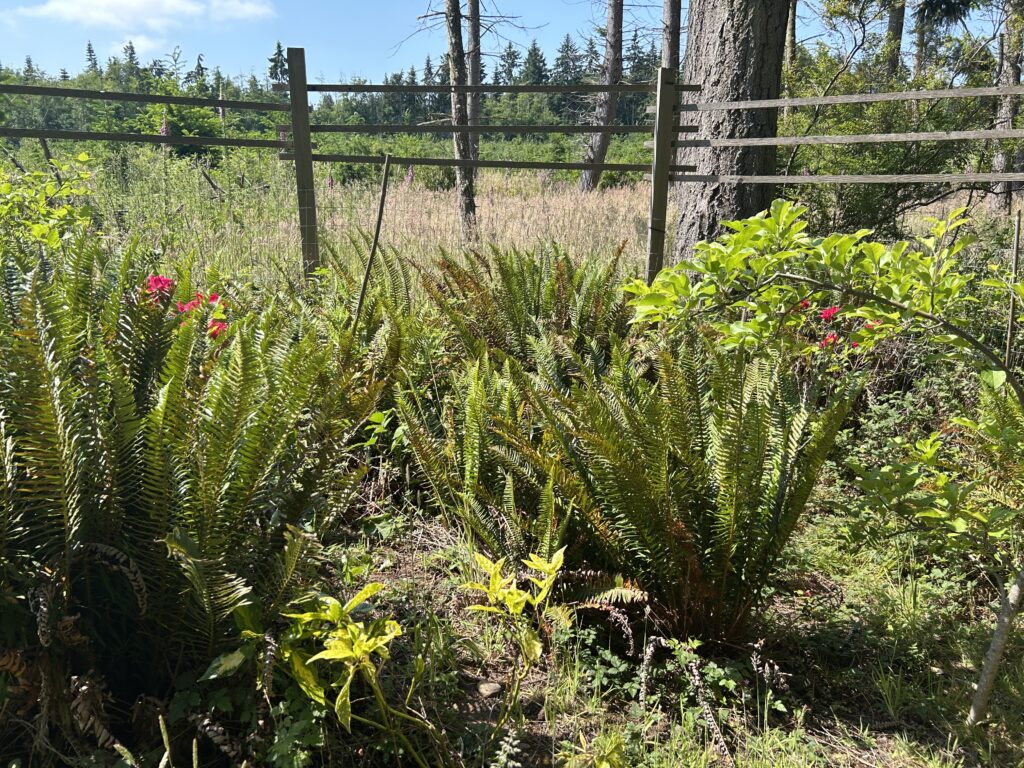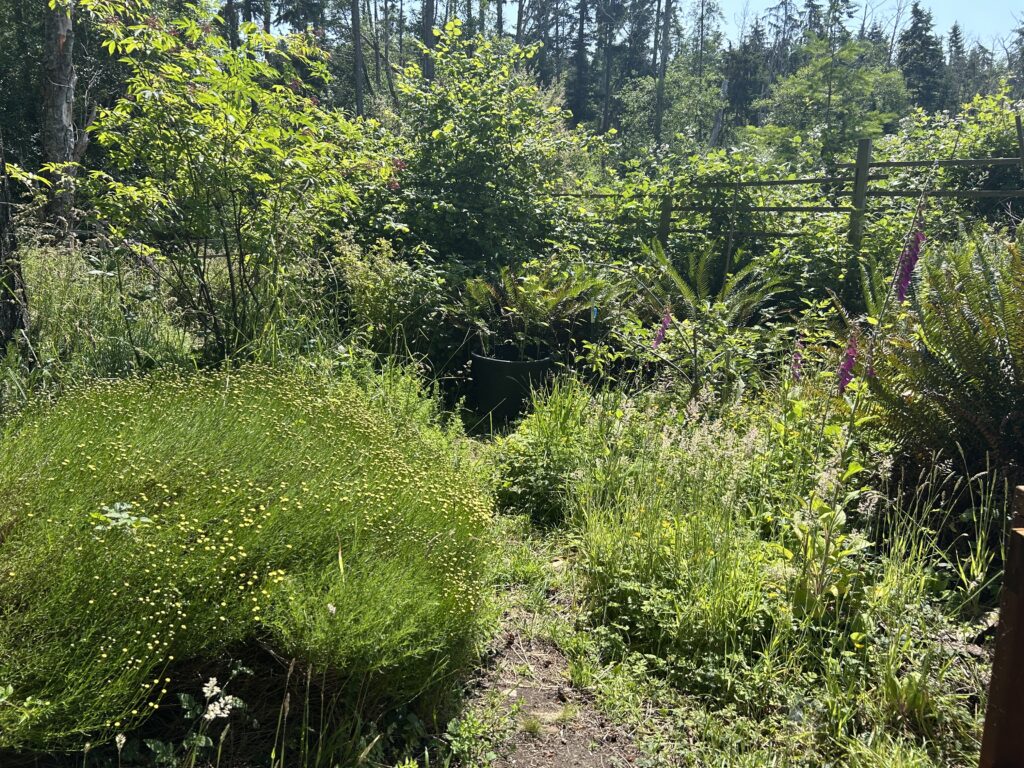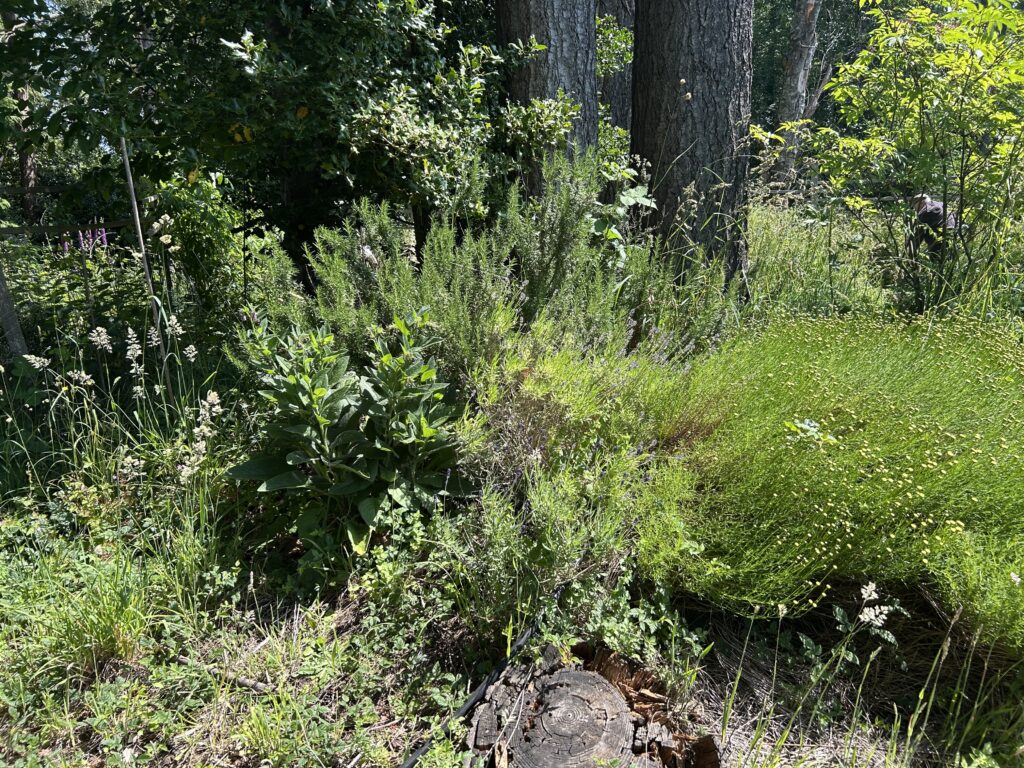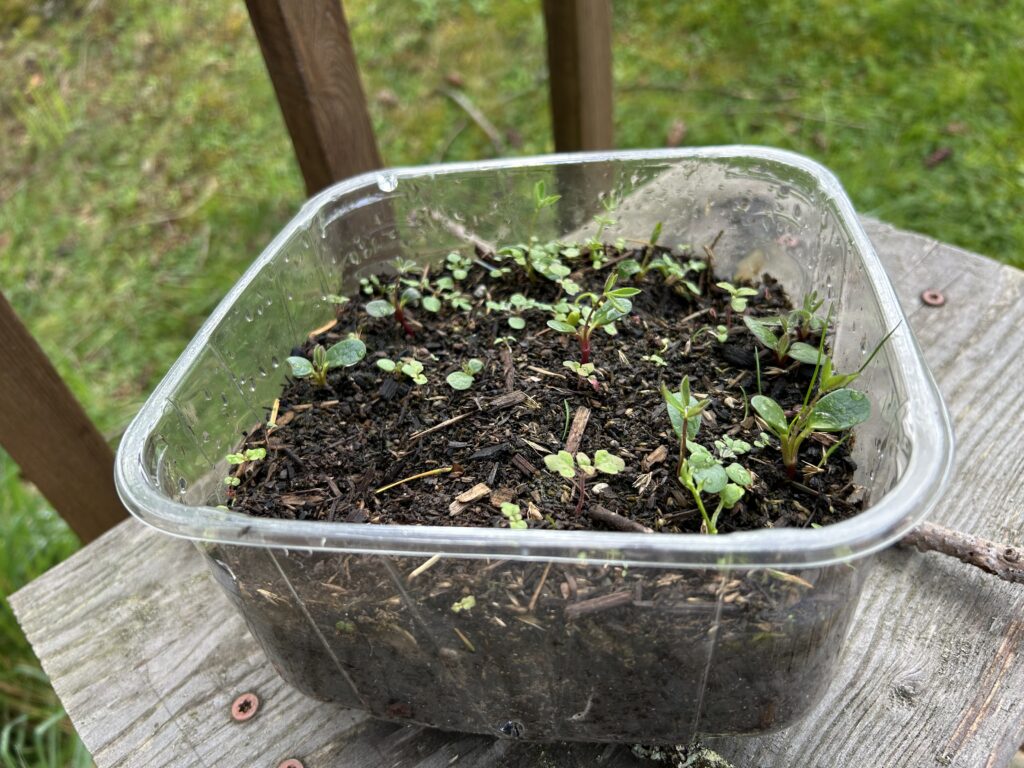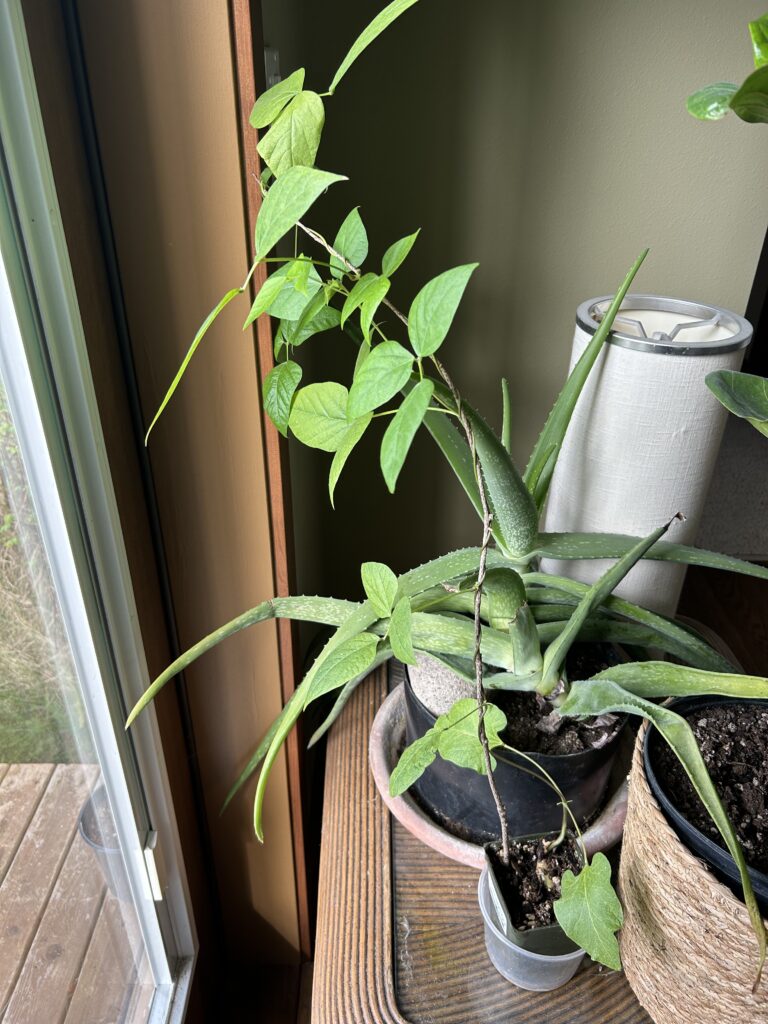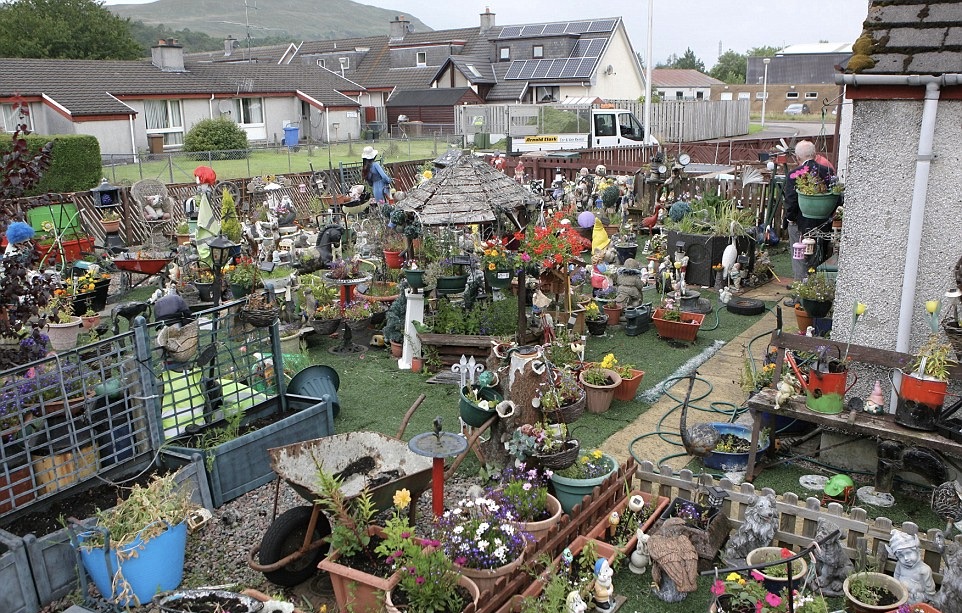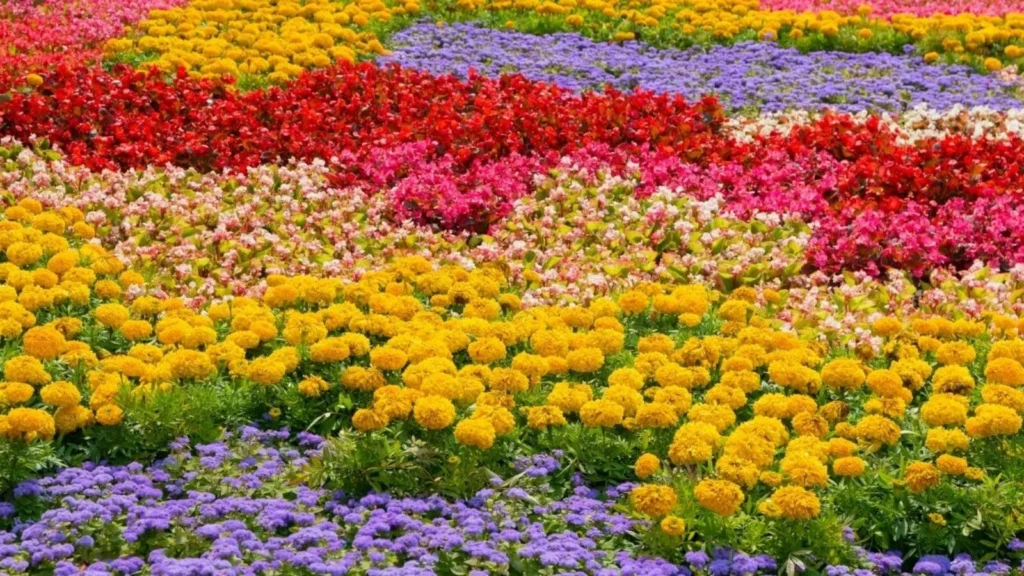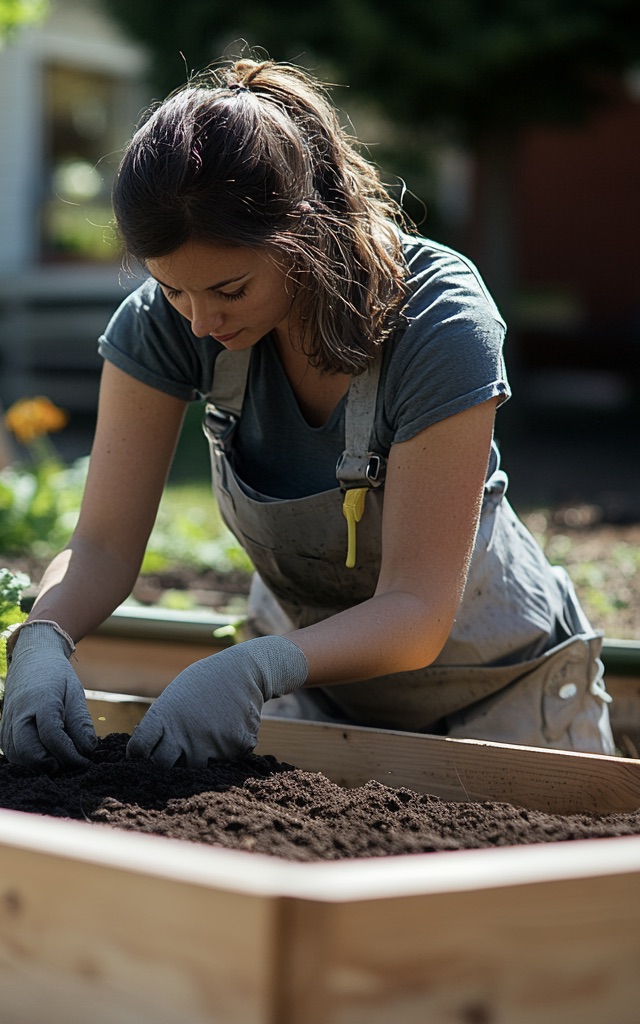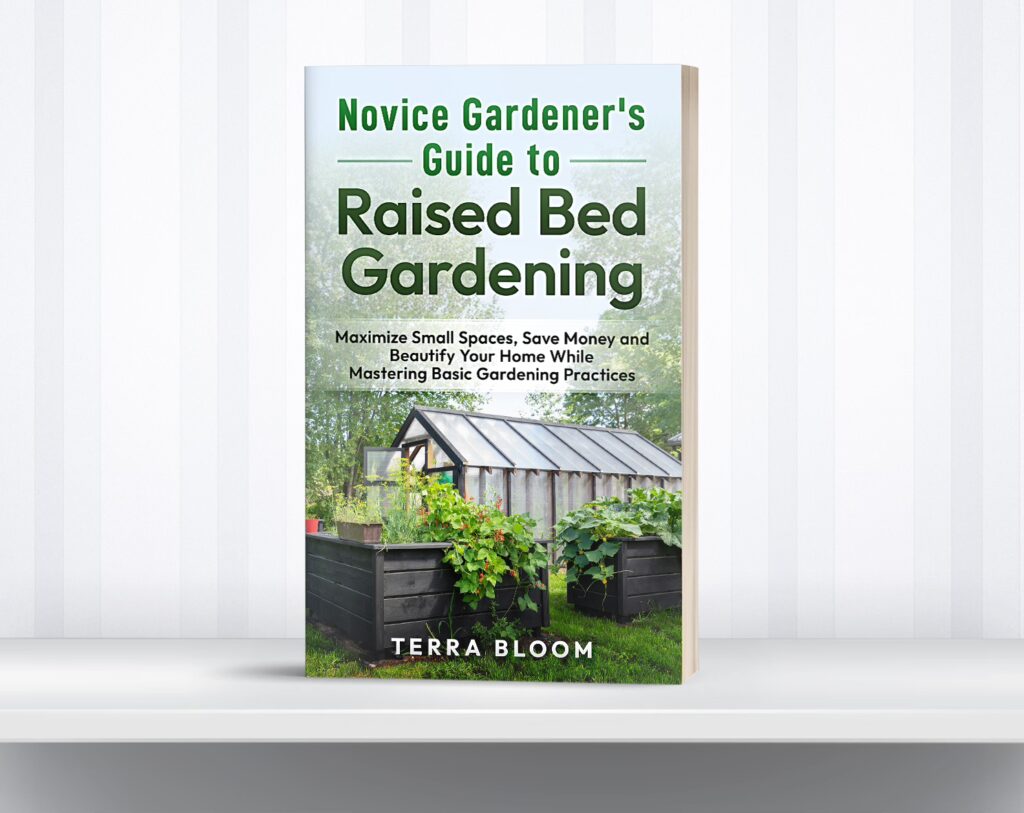A while back…waay back in early May…we had unseasonably hot weather, here on this lovely island in WA. state. 83 degrees plus a bit of humidity? Unheard of…
Since then, no rain, until two nights ago. Cloudy yesterday, today just a little sun. It looks like the clouds are gonna win.
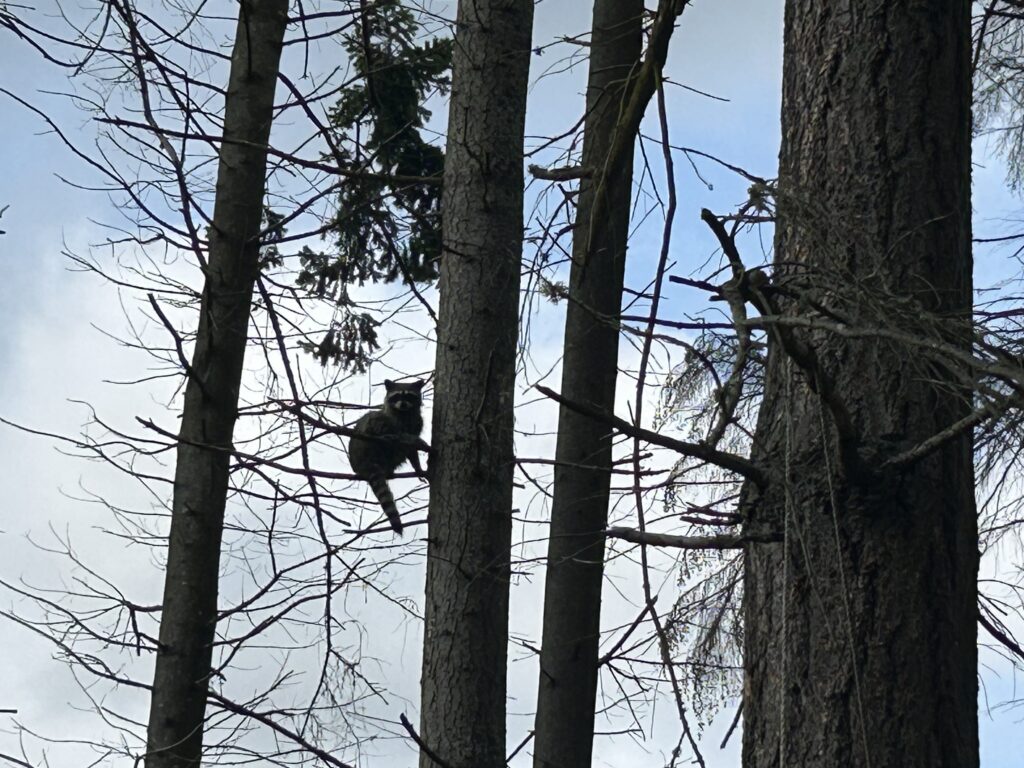
While cloud gazing, I discovered a guest.
The garden is appreciating the days of moisture; the soil is not drying out. My sad attempt at growing wildflowers: I didn’t remember they should be planted in the fall, I was so excited. Then the birds kept digging in the soil…so few survived until they finally had a place to be transplanted to.
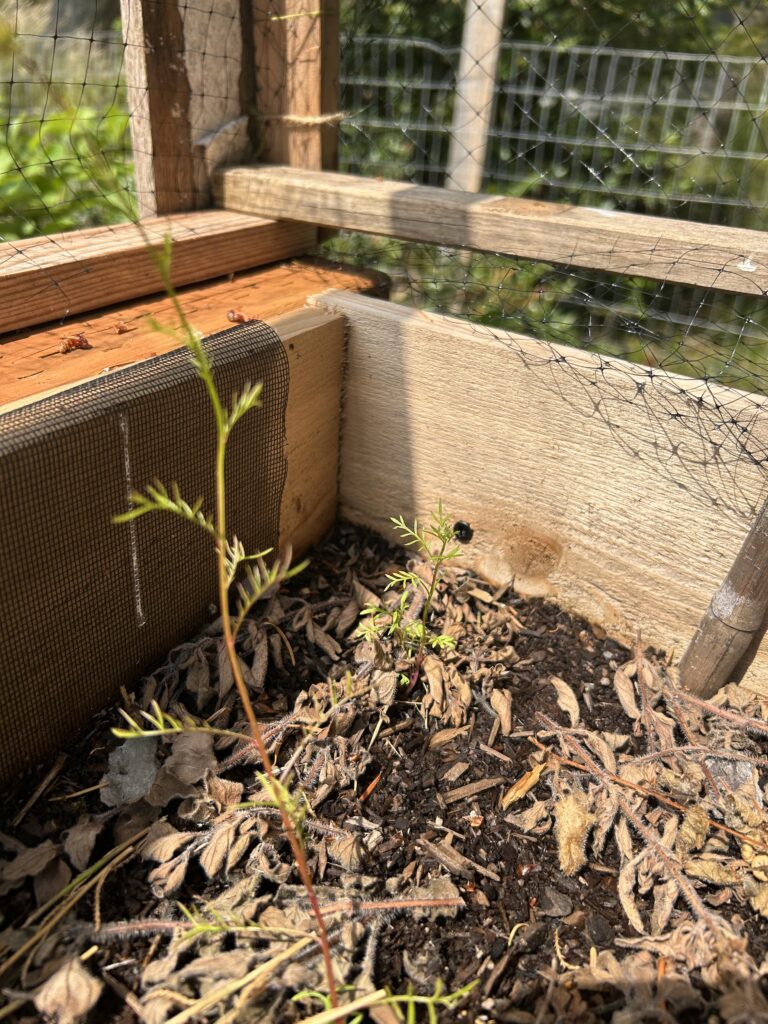
Sad…
But there is so much happiness elsewhere, since the rain. The lavender!
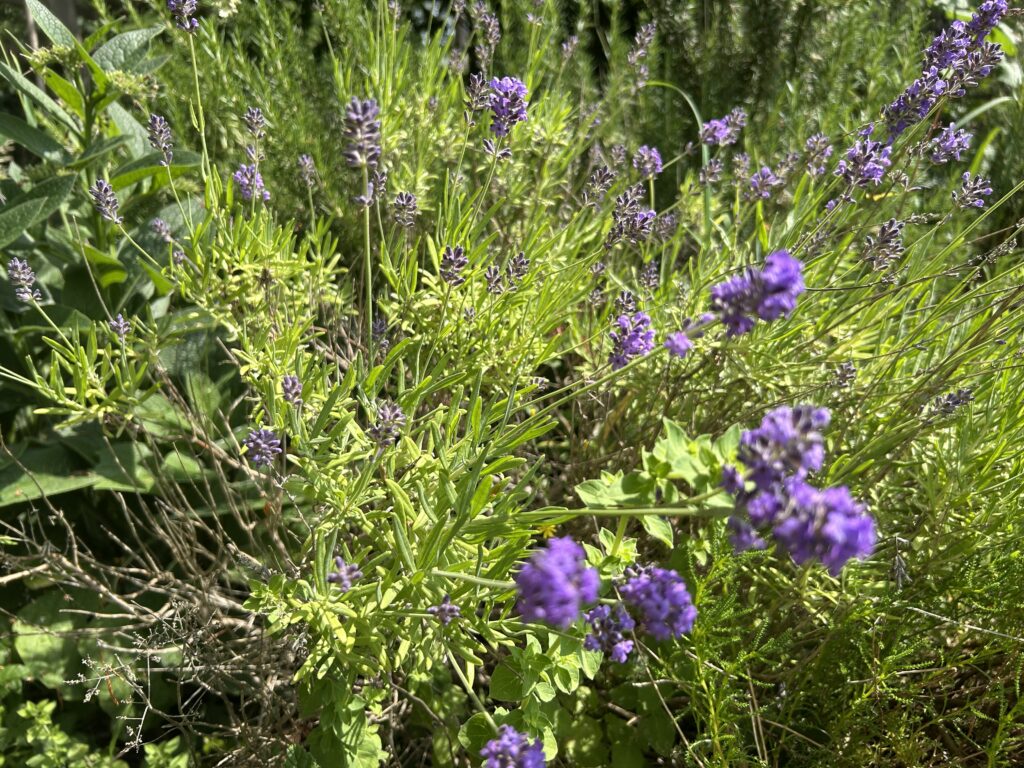
The apples!
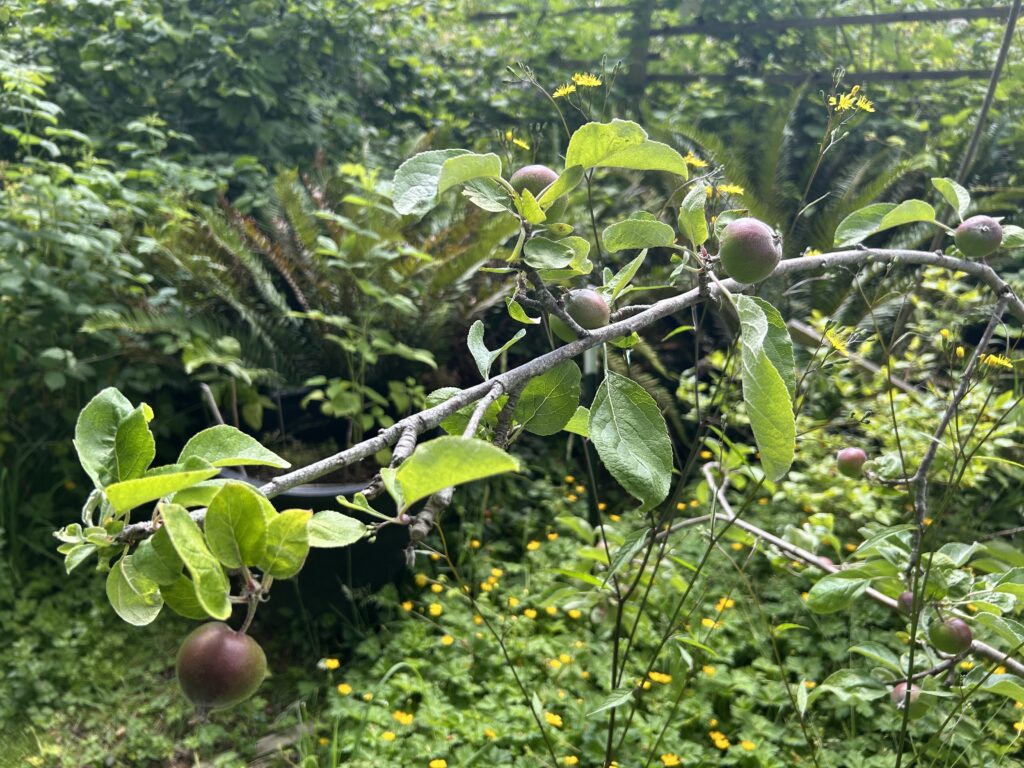
The elderberries! Which of course the birds are eating before they get any size to them.
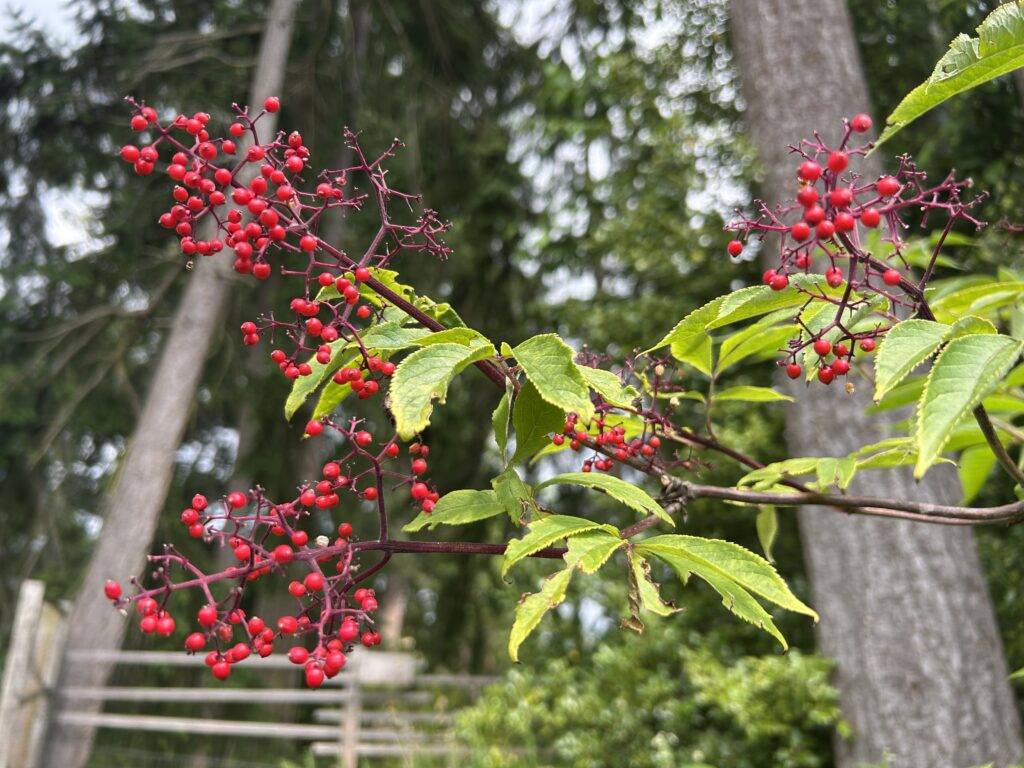
And the mystery yellow-flowered bush ninja plant. Which I will now try to identify.
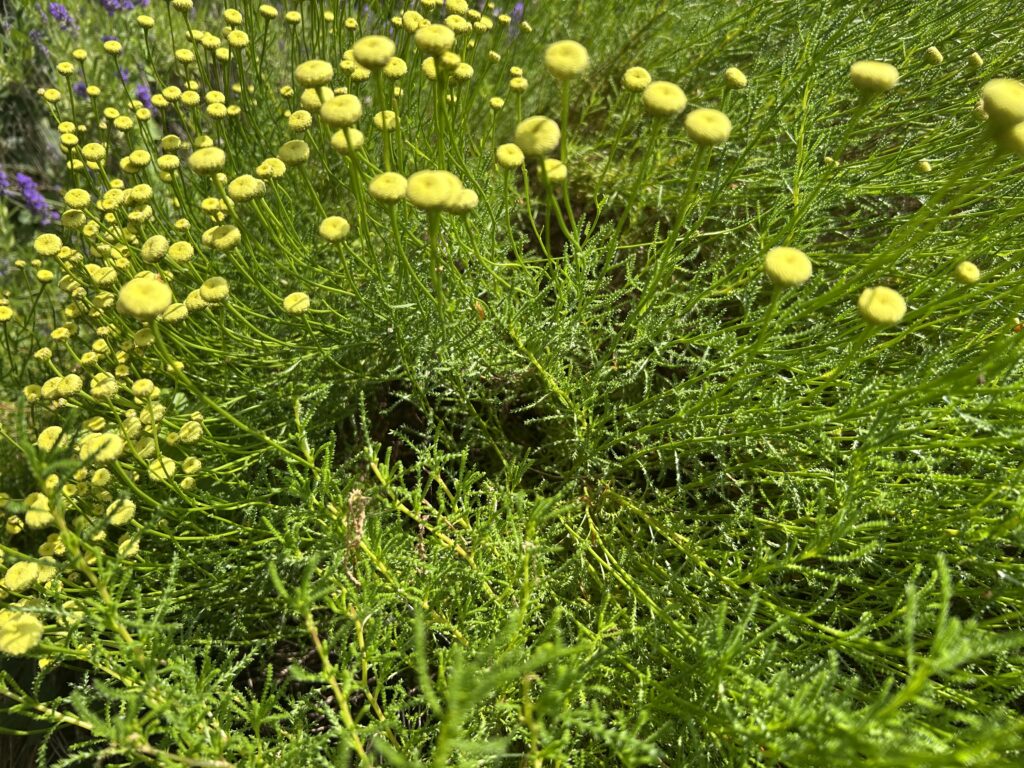
I do believe this is Santolina rosmarinifolia. It is described as a culinary plant, used in Mediterranean dishes, commonly known as the olive herb because it lends an olive-like flavor to food. Hmm, I will have to try it.
But back to the raccoon in the tree. When I approached the tree, he climbed higher. When I went inside, he came down and then up the next tree, then wash, rinse, repeat…He seemed to be heading in an easterly direction. I think he wished he was a squirrel, able to jump from tree to tree.

We watched him for about 15 minutes, during which time our cat begged us to subscribe to this Cat Channel. I would if I could, Echo.
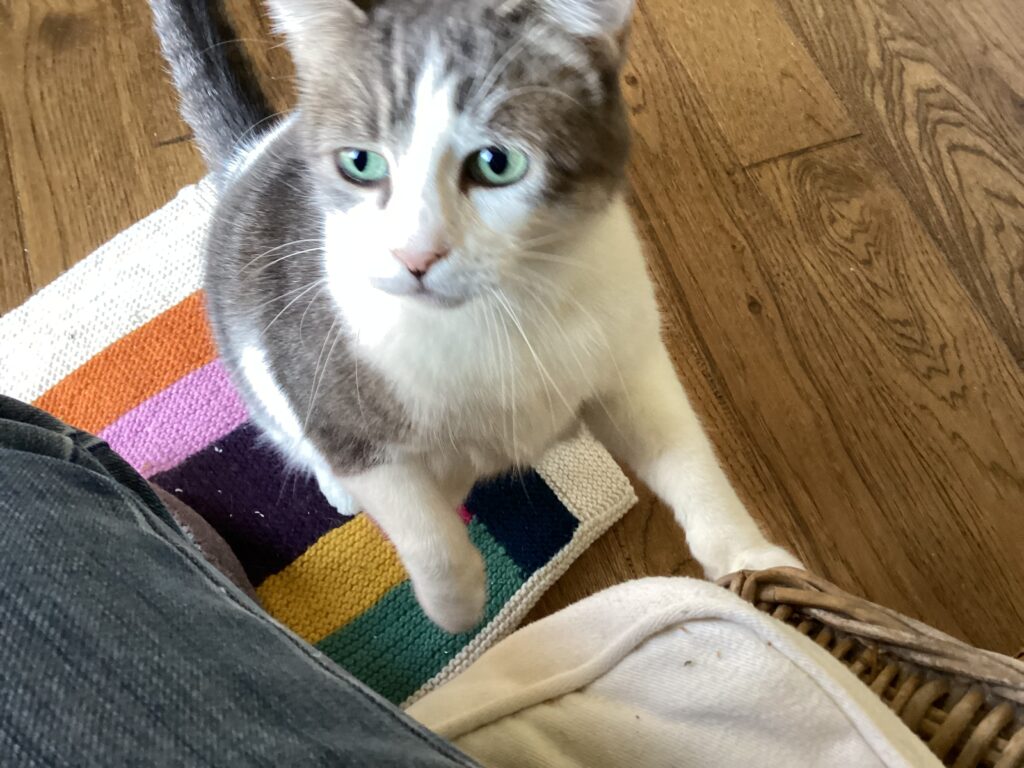
But ultimately, coons are not garden-friendly, so we won’t be asking him to stay.
